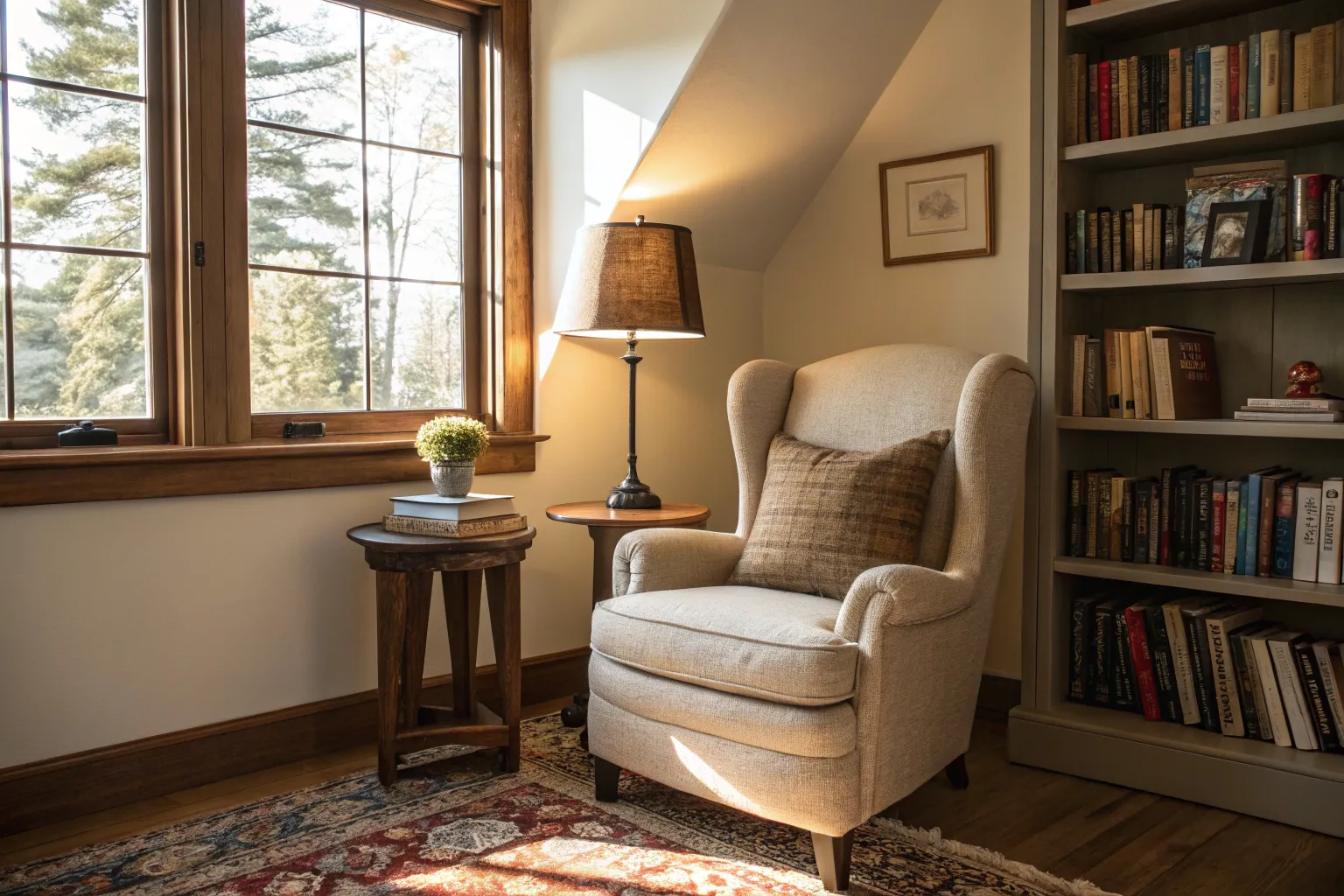Every home has them—those awkward ninety-degree intersections where walls meet, often becoming repositories for dust, forgotten items, or simply remaining barren and uninviting. Yet these overlooked spaces represent some of the most valuable real estate in our homes, offering untapped potential for both function and beauty.
Understanding the Psychology of Corner Spaces
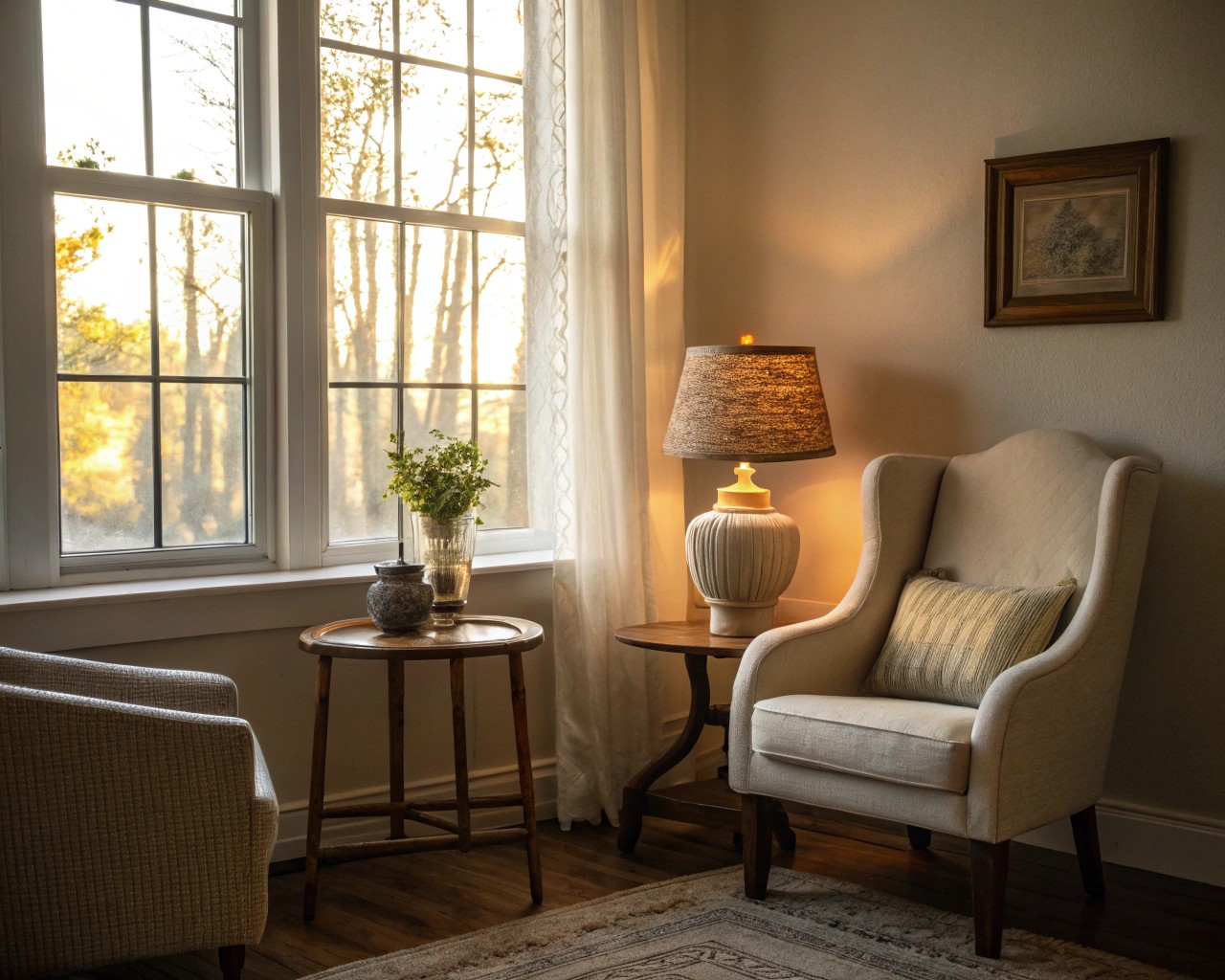
Corner spaces occupy a unique position in our spatial psychology. Research in environmental psychology reveals that corners naturally create feelings of enclosure and intimacy, which can be either comforting or claustrophobic depending on how they’re designed. The phenomenon of “corner neglect” occurs because these spaces exist at the periphery of our visual field, making them feel disconnected from the main flow of the room.
I’ve observed in my practice that well-designed corners can actually reduce the cognitive load of a space. When corners are thoughtfully integrated, they create visual anchors that help define zones within larger rooms. The brain appreciates this organization—it reduces the mental effort required to process a space and creates a sense of completion that makes rooms feel more harmonious.
The key insight from biophilic design principles is that corners can serve as refuges—spaces that satisfy our evolutionary need for both prospect (the ability to see out) and refuge (the security of having our backs protected). This dual nature makes corners particularly well-suited for activities requiring focus or relaxation.
Assessment and Planning: Reading Your Corner’s Potential
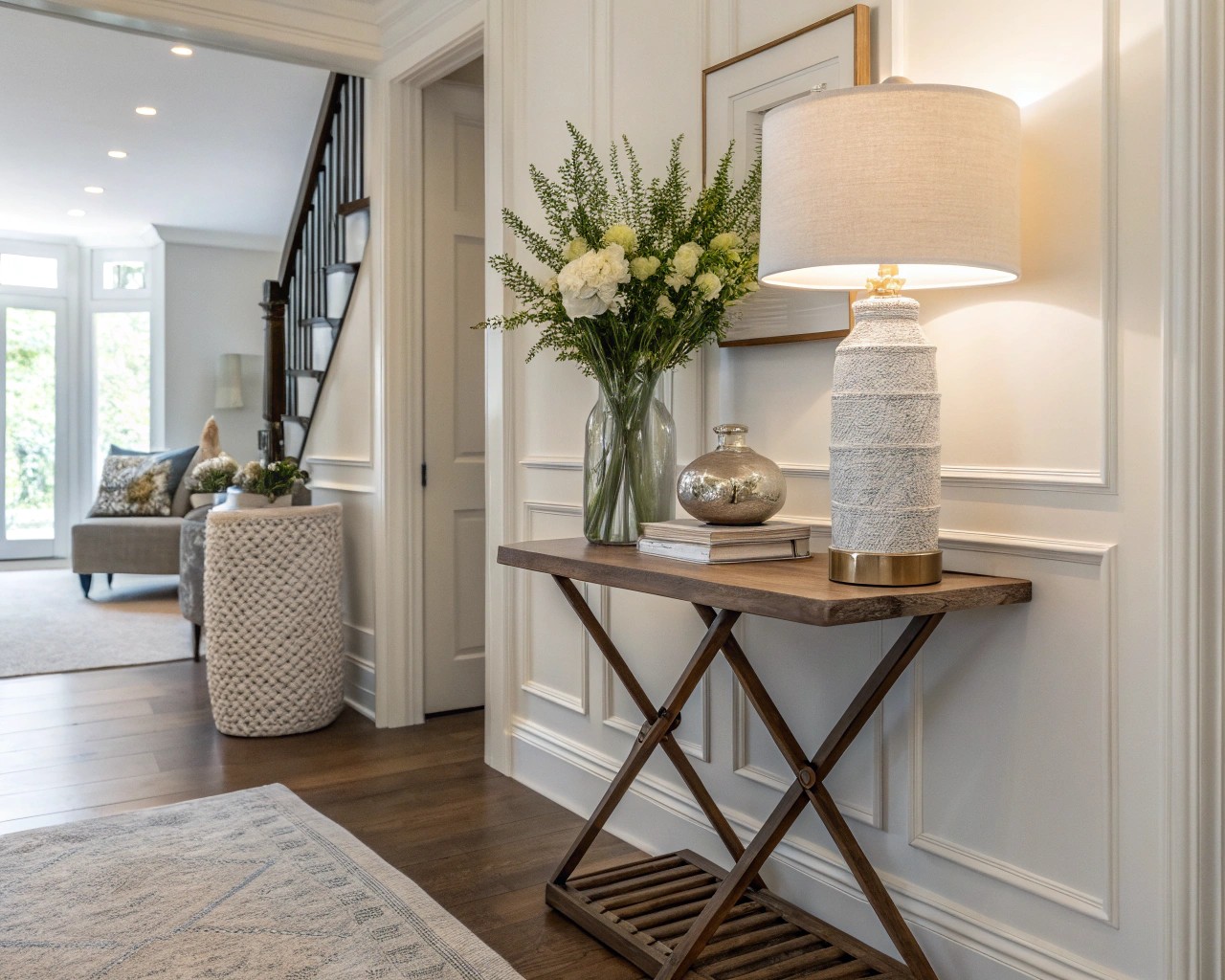
Before transforming any corner, I conduct what I call a “corner audit.” This systematic evaluation considers several critical factors:
Spatial Analysis
– Measure the available floor space in both directions from the corner
– Note ceiling height and any architectural features
– Identify traffic patterns and clearance requirements
– Assess natural and artificial light sources
Functional Needs Assessment
– Determine what activities the corner could support
– Consider storage requirements for the room
– Evaluate whether the corner should be a destination or transition space
Environmental Factors
– Proximity to windows and natural light exposure
– Electrical outlet availability and placement
– Ventilation and air circulation patterns
– Temperature variations throughout the day
For example, a corner receiving morning sunlight might be ideal for a reading nook or workspace, while a dimmer corner could serve perfectly for ambient lighting or decorative display.
Lighting Solutions: Illuminating Forgotten Spaces
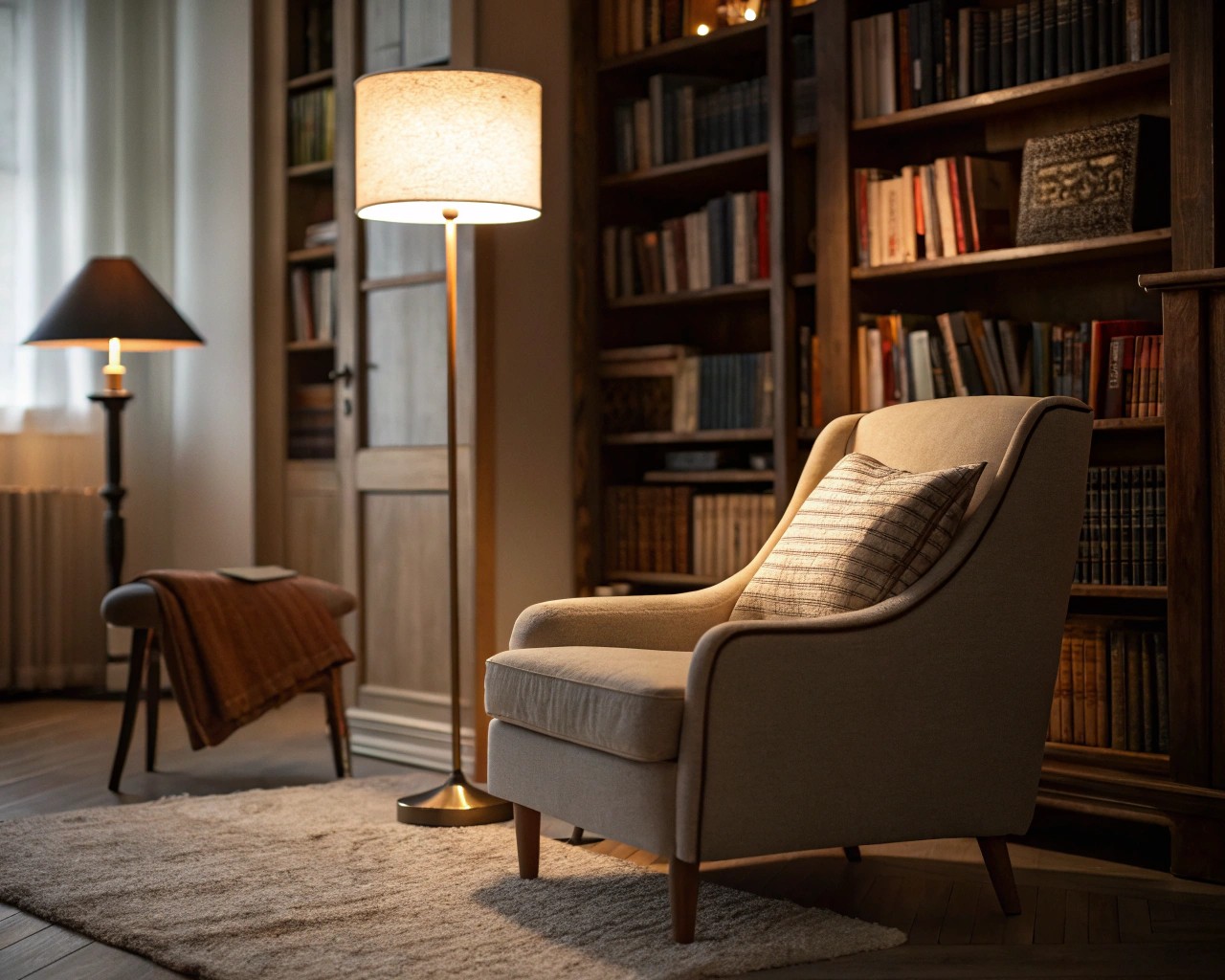
Corner lighting presents unique challenges and opportunities. These spaces often fall into lighting “dead zones” but can be transformed with strategic illumination approaches.
Ambient Lighting Strategies
Corner floor lamps with arc designs are particularly effective because they can cast light across a broader area while maintaining a compact footprint. The Arco-style floor lamp remains a classic choice, but newer LED versions offer energy efficiency and adjustable color temperatures.
Task Lighting Applications
For corners designated as work or reading areas, layered lighting is essential. I recommend combining a primary task light with subtle ambient lighting to reduce eye strain and create a more inviting atmosphere.
Accent Lighting Techniques
– Wall-mounted corner sconces: These can highlight architectural features while providing general illumination
– LED strip lighting: Installed along corner edges, this creates dramatic architectural emphasis
– Pendant lights: Particularly effective in dining areas or over corner seating arrangements
Implementation Table: Corner Lighting Solutions
| Corner Type | Primary Light Source | Secondary Light | Best For |
|---|---|---|---|
| Reading Nook | Floor lamp with swing arm | Wall sconce | Task lighting |
| Decorative Display | Picture lights | Ambient uplighting | Art viewing |
| Workspace | Desk lamp | Overhead pendant | Productivity |
| Seating Area | Table lamp | Floor lamp | Conversation |
| Plant Corner | Grow lights | Accent lighting | Plant health |
Furniture and Seating: Maximizing Corner Efficiency
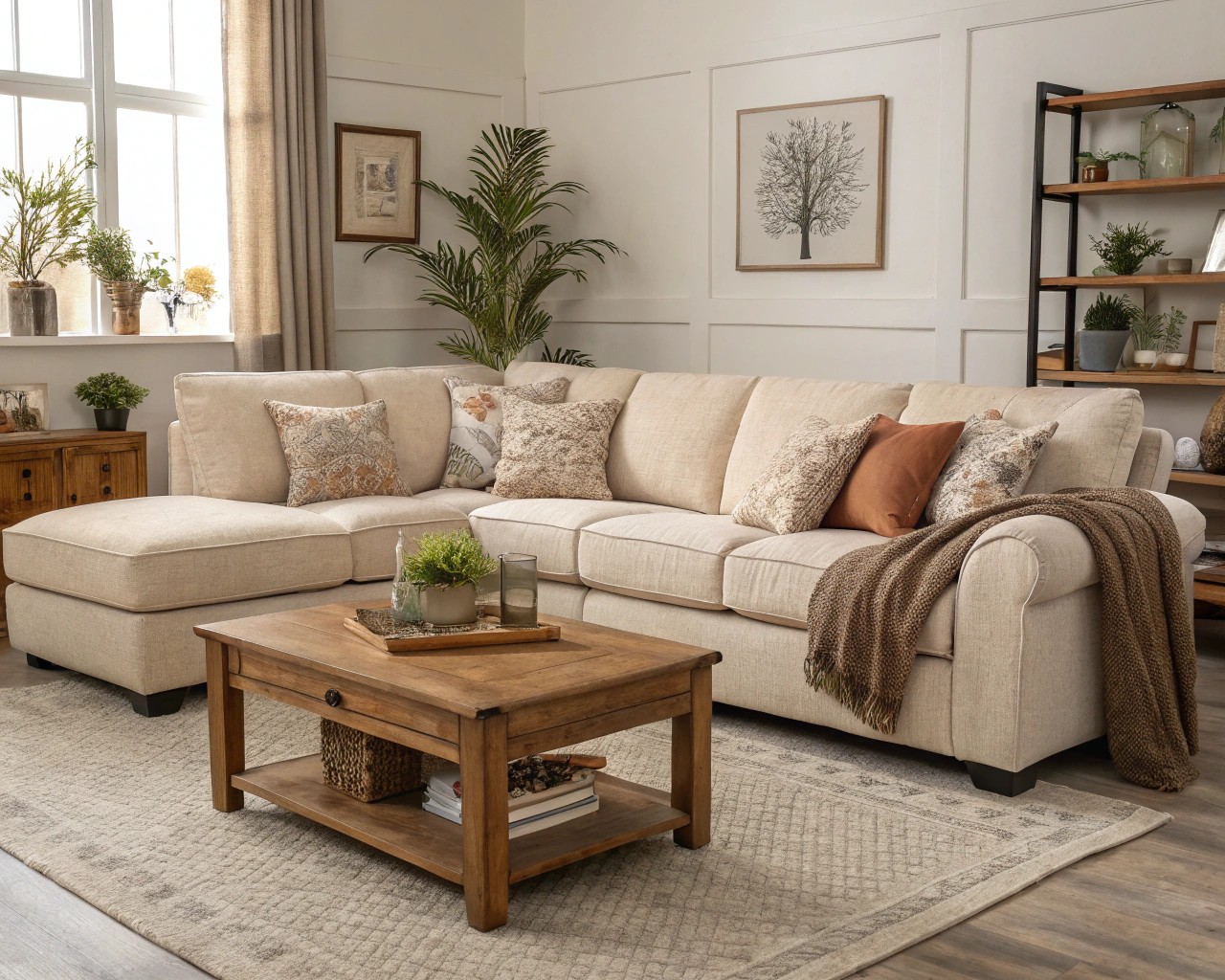
The geometry of corners demands thoughtful furniture selection. Standard rectangular furniture often creates awkward gaps, while pieces specifically designed for corner placement can transform these spaces into highly functional areas.
Corner Seating Solutions
Corner sofas and sectionals are obvious choices, but their placement requires careful consideration of room flow. In feng shui principles, corner seating should maintain what’s called the “commanding position”—allowing occupants to see the room’s entry while having solid support behind them.
For smaller corners, consider these alternatives:
- Triangular corner tables: These maximize surface area while fitting perfectly into the angle
- Corner chairs with ottomans: Creates a cozy reading spot without overwhelming the space
- Built-in corner benches: Provide seating and storage in a single solution
Workspace Solutions
The rise of remote work has increased demand for corner office solutions. L-shaped desks are particularly effective because they provide generous work surface while fitting efficiently into corner spaces. Key considerations include:
- Desk height and ergonomics: Ensure the corner setup doesn’t compromise posture
- Storage integration: Built-in shelving maximizes vertical space
- Cable management: Corner workstations require thoughtful wire organization
Case Study: The Multi-Functional Corner
In a recent project, I transformed a 4×4 foot corner into a complete workspace by installing a custom L-shaped desk with integrated storage. The design included:
- Floating shelves extending up both walls
- Under-desk storage cabinets with integrated lighting
- A small plant shelf positioned to catch morning light
- Cord management system hidden within the desk structure
This solution provided as much functionality as a traditional desk while using 40% less floor space.
Storage and Organization: Vertical Solutions
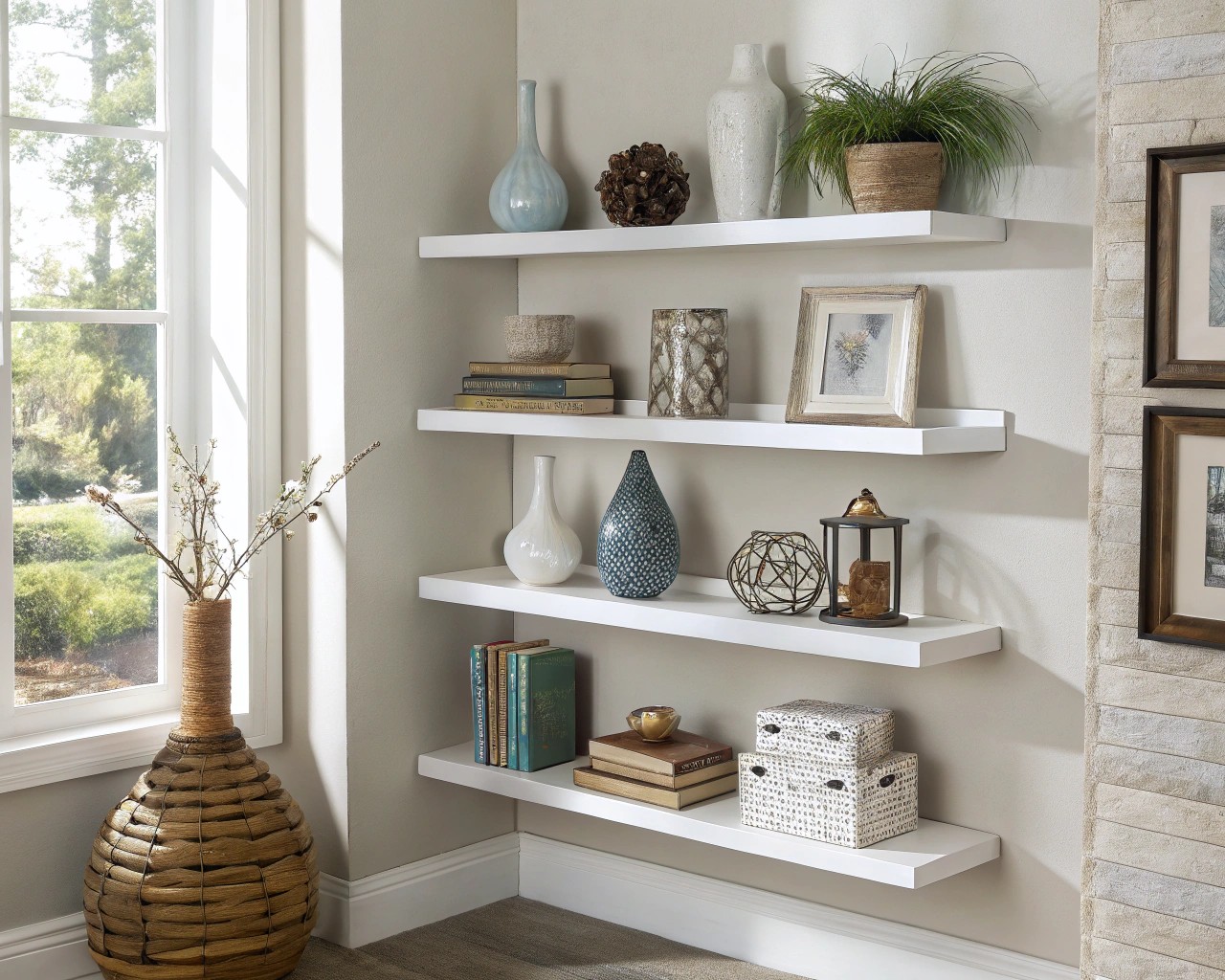
Corners offer exceptional opportunities for vertical storage that doesn’t encroach on living space. The key is selecting systems that work with, rather than against, the corner’s geometry.
Floating Corner Shelves
These represent the simplest corner storage solution and can be installed at any height. I recommend varying shelf lengths to create visual interest—the longest shelf should span the corner equally, with shorter shelves on one side creating an asymmetrical but balanced arrangement.
Corner Shelving Systems
– Floor-to-ceiling units: Maximize storage while drawing the eye upward
– Modular systems: Allow for customization as needs change
– Corner-specific designs: Fit perfectly without wasted space
Storage Implementation Guide
| Storage Need | Recommended Solution | Height Range | Capacity |
|---|---|---|---|
| Books | Corner bookcase | 60-84 inches | 100-200 books |
| Display items | Floating shelves | 48-72 inches | 10-15 objects |
| Linens | Corner cabinet | 30-84 inches | 20-40 items |
| Kitchen items | Corner lazy Susan | 12-36 inches | 30-50 items |
| Office supplies | Corner desk organizer | 24-48 inches | Multiple categories |
Professional Tip: When designing corner storage, always leave the bottom 18 inches relatively clear to maintain visual lightness and allow for cleaning access.
Decorative Elements: Adding Life and Interest

Corners provide excellent opportunities for decorative impact that doesn’t interfere with traffic flow or daily activities.
Mirror Placement Strategies
Corner mirrors can dramatically expand perceived space when positioned correctly. The key is ensuring the mirror reflects something attractive—a view, artwork, or well-lit area rather than clutter or awkward angles.
Art and Gallery Walls
Corner gallery walls offer a unique opportunity to create immersive art experiences. Unlike traditional flat-wall galleries, corner installations can wrap around the viewer, creating a more engaging visual journey.
Gallery Wall Implementation Steps:
1. Create paper templates of all frames
2. Use removable adhesive to experiment with arrangements
3. Start with one anchor piece at eye level
4. Build outward from the corner, maintaining visual balance
5. Leave appropriate spacing (2-3 inches) between pieces
Plant Arrangements
Corners provide excellent conditions for plant displays, particularly for species that prefer indirect light. Layered plant arrangements using stands of varying heights create natural-looking compositions that bring life to forgotten spaces.
Recommended Corner Plants:
- Tall specimens: Fiddle leaf fig, rubber plant, bird of paradise
- Medium height: Monstera, snake plant, parlor palm
- Low-level: Pothos, philodendron, peace lily
Specialized Corner Solutions
Reading Nooks
Creating an effective reading nook requires careful attention to three elements: seating comfort, lighting quality, and storage accessibility. The most successful reading corners I’ve designed share these characteristics:
- Comfortable seating: Deep chairs that accommodate various reading positions
- Adjustable lighting: Combination of task and ambient lighting
- Storage integration: Easy access to books and reading materials
- Personal touches: Blankets, pillows, and personal objects that encourage use
Home Office Corners
The challenge with corner workspaces is maintaining productivity while working in what’s traditionally a secondary space. Success depends on:
- Ergonomic setup: Proper monitor height and seating position
- Storage solutions: Vertical organization systems
- Lighting design: Adequate task lighting to prevent eye strain
- Visual boundaries: Creating separation from the rest of the room
Bar Cart Stations
Corner bar carts have experienced a renaissance, serving as both functional serving areas and decorative displays. Effective styling involves:
- Layered heights: Varying bottle and glassware heights
- Seasonal updates: Changing decorative elements throughout the year
- Practical organization: Easy access to frequently used items
- Visual anchoring: Artwork or mirrors to define the space
Room-by-Room Applications
Living Room Corners
These spaces offer the most flexibility for corner solutions. Popular options include:
- Reading nooks with accent lighting
- Plant corners with multiple species
- Storage solutions that double as display areas
- Conversation areas with corner seating
Bedroom Corners
Bedroom corners should promote rest and relaxation:
- Vanity areas with mirrors and storage
- Reading chairs with soft lighting
- Plant displays for air purification
- Quiet workspaces for journaling or correspondence
Kitchen Corners
Functional efficiency is paramount in kitchen corners:
- Specialized storage for cookware and appliances
- Spice organization systems
- Corner prep areas with cutting boards
- Coffee or tea stations
Dining Room Corners
These spaces can enhance the dining experience:
- Bar cart stations for entertaining
- China storage and display
- Serving areas with easy access to the table
- Decorative elements that complement the dining atmosphere
Implementation Guide: From Planning to Completion
Phase 1: Assessment (Week 1)
– Measure all corner dimensions
– Photograph corners from multiple angles
– Note existing electrical and structural elements
– Identify primary function requirements
Phase 2: Design Development (Week 2)
– Create scaled drawings or digital mockups
– Source materials and furniture
– Plan electrical modifications if needed
– Develop budget and timeline
Phase 3: Installation (Week 3-4)
– Complete any electrical work first
– Install permanent fixtures and built-ins
– Add furniture and storage elements
– Install lighting and test functionality
Phase 4: Styling and Refinement (Week 5)
– Add decorative elements and personal touches
– Adjust lighting levels and positions
– Organize storage systems
– Make final adjustments for comfort and function
Budget Considerations
| Solution Type | Budget Range | DIY Potential | Professional Required |
|---|---|---|---|
| Lighting | $50-$500 | Medium | Electrical work |
| Furniture | $100-$2000 | High | Assembly only |
| Storage | $75-$800 | High | Custom installations |
| Decorative | $25-$300 | High | Art hanging |
| Built-ins | $500-$5000 | Low | Carpentry work |
Maintenance and Evolution
Corner spaces require ongoing attention to maintain their functionality and appeal. I recommend quarterly reviews to assess:
- Clutter accumulation: Corners can easily become dumping grounds
- Lighting needs: Seasonal changes may require adjustments
- Storage efficiency: As needs change, storage systems may need updates
- Decorative freshness: Rotating accessories keeps corners interesting
Seasonal Maintenance Schedule:
- Spring: Deep cleaning and plant care
- Summer: Lighting adjustments for longer days
- Fall: Storage organization and decoration updates
- Winter: Cozy element additions and lighting enhancement
Corner spaces represent one of the most overlooked opportunities in home design. When approached with careful planning and creative thinking, these forgotten areas can become some of the most cherished and functional spaces in our homes. The key is understanding that corners aren’t just leftover space—they’re opportunities for creating intimate, purposeful environments that enhance daily life.
Success in corner design comes from balancing function with beauty, understanding the psychological needs these spaces can fulfill, and implementing solutions that work with, rather than against, the unique characteristics of corner geometry. Whether creating a quiet reading retreat, an efficient workspace, or simply a more beautiful room, thoughtful corner design can transform the entire character of a space.
The investment in corner development pays dividends in both daily enjoyment and long-term home value. These spaces, once activated, become integral parts of our living experience—proof that no space is too small or too challenging to deserve careful design consideration.

